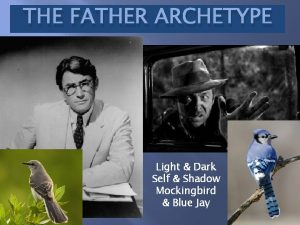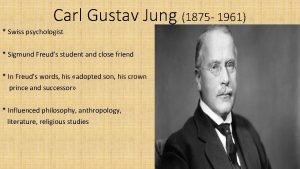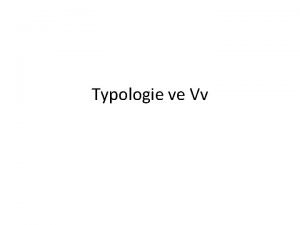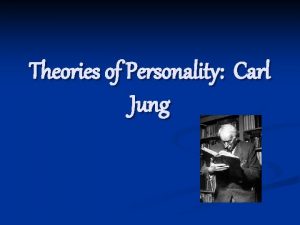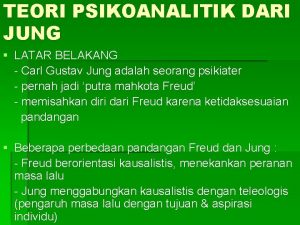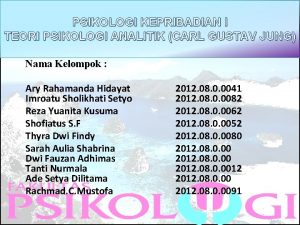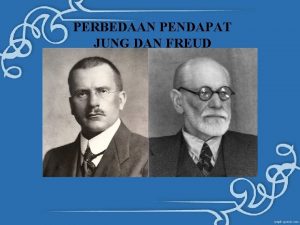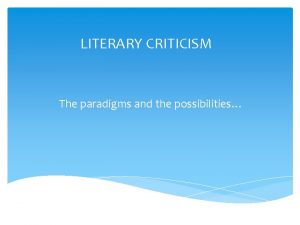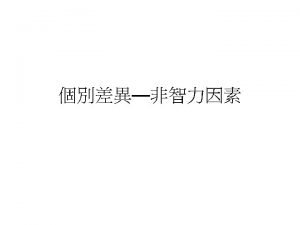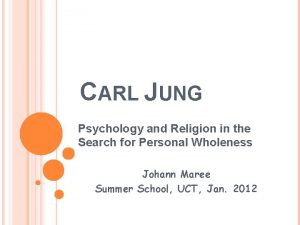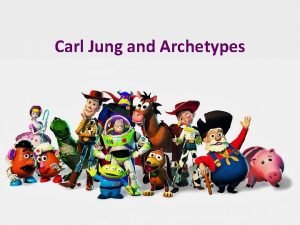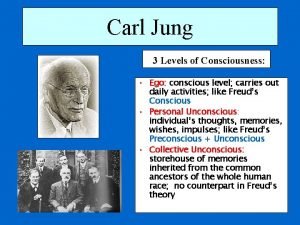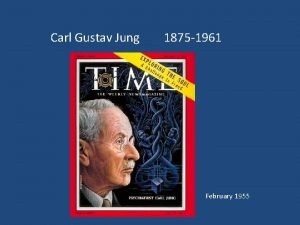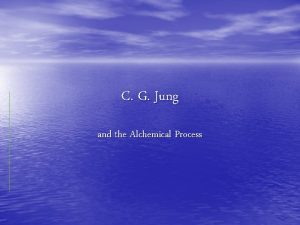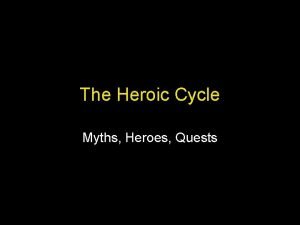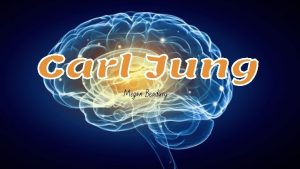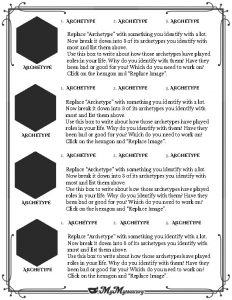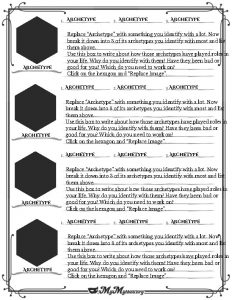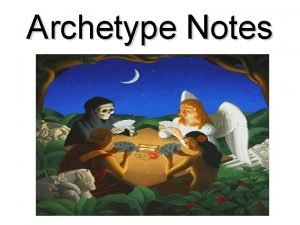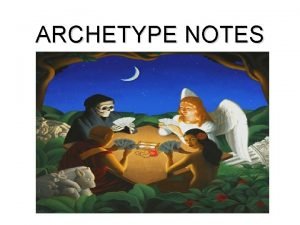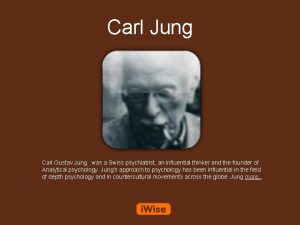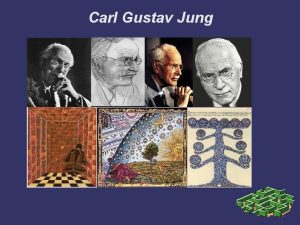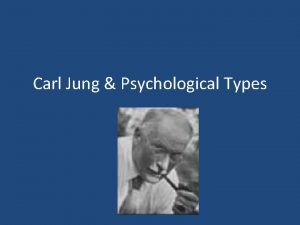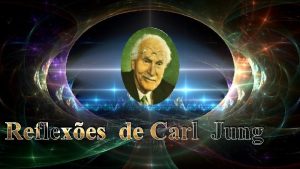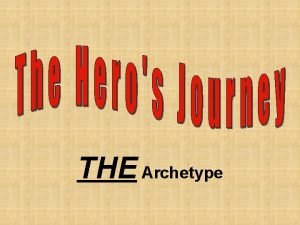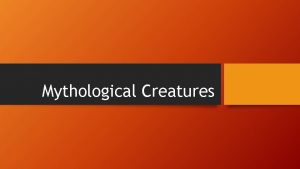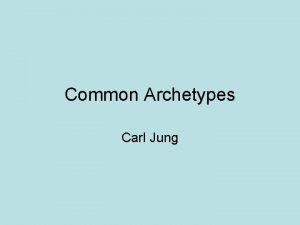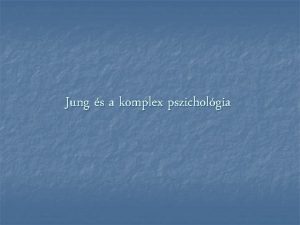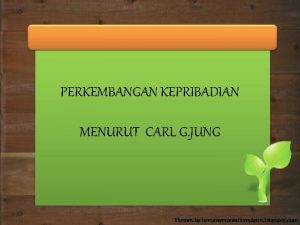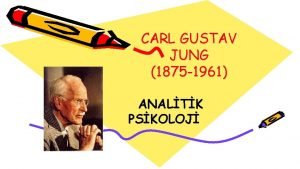MYTHOLOGICAL ARCHETYPE ANALYSIS Notes Carl Jung a Swiss



















- Slides: 19

MYTHOLOGICAL ARCHETYPE ANALYSIS

Notes Carl Jung, a Swiss psychotherapist and psychiatrist who founded analytical psychology, said an archetype is “a figure… that repeats itself in the course of history wherever creative fantasy is fully manifested. ” (in Jungian psychology) a collectively inhe rited unconscious idea, pattern of thought, image, etc. ,

Definition ar·che·type �noun 1. the original pattern or model from which all things of the same kind are copied or on which they are based; a model or first form; proto type.

Carl Jung believed that all human beings are born knowing certain archetypes. Evidence: Every culture has a creation story, a life-after-death belief, and a reason for human failings, and these stories –when studied comparatively – are far more similar than different.

archetypes When reading a work, a critic looks for very general recurring themes, characters, and situations. In modern times, the same archetypes are used in film, which is why it’s so easy to make a modern translation (Clueless) of an older work (Jane Austen’s Emma).

Three main points of study Archetypal characters Archetypal images Archetypal situations

Archetypal characters The HERO: a figure, larger than life, whose search for self-identity and/or self-fulfillment results in his own destruction (often accompanied by the destruction of the general society around him). In the aftermath of the death, however, there is progress toward some ideal. � Superman (Clark Kent searching for a balance between his super-self and mortal self) � Jesus Christ (mortal man comes to terms with his destiny as the Messiah) � Neo (searching for balance between “the One” identity and what he can salvage of his Matrix self)

Archetypal characters Variations on the HERO: � The LONER/OUTCAST: character who is separated from society due to a physical impairment or an emotional realization that makes this character different. Jesus goes into the desert to discern his destiny Buddha leaves society to come to terms with his philosophy Victor Frankenstein travels to remote locales to avoid people after creating the monster � Often, the loner is one of the following: The UNDERDOG, the smaller, weaker, less-worldly-wise character, who usually emerges victorious (Bella Swan) The guilt-ridden figure in search of redemption (Edward Cullen. )

Archetypal characters The VILLAIN: the male or female personification of evil. Note that, while nearly all literature has an antagonist to provide conflict with the protagonist, not all antagonists are villains. Villains are evil. Their malice is often limitless, and rarely is a villain reformed in a story. � Satan � Loki (Norse mythology) Some variations of the villain are: � The “mad scientist” � The bully

Archetypal characters The temptress – female who uses men’s desires against them, leading to destruction (Eve, Juliet, Lady Mac. Beth) The Earth Mother/Goddess – Mother Nature, Mother Earth, the nurturing, lifegiving aspect of femininity The SAGE/ MENTOR – largely of Eastern origin, the sage is the elderly wise man; the teacher or mentor. Western Examples: � Merlin � Yoda Morpheus (Matrix) Gandalf

Archetypal Images Note: READ THIS BOOK. Sample chapters: � � � � Every trip is a quest Eating as communion If it’s Square, it’s a Sonnet When in doubt, it’s from Shakespeare Or the Bible It’s Greek to me It’s more than just rain or snow He’s blind for a reason

Archetypal Images COLORS: red as blood, anger, passion, violence; gold as greatness, value, wealth; green as fertility, luxury, growth; blue (sky color) as God-like holiness, peace, serenity; white as purity; etc. NUMBERS: three for the Christian trinity; four for the four seasons, the four ancient elements (earth, water, fire, air); twelve for the calendar, etc.

Archetypal Images FIRE: ambiguously both protective and destructive; on an archetypal level, fire symbolizes knowledge and industry (Prometheus) GARDENS: natural abundance; easy, beautiful life; new birth, hope; Eden, the original Paradise from which humanity was expelled. Geometric shapes: triangle for the trinity;

Archetypal Images CELESTIAL BODIES: the sun (masculine) is both giver of life and destroyer of life; the moon (feminine) marks the passage of time and controls the course of human events. Seedtime, harvest, etc. are all determined more by phases of moon than sun, archetypically speaking. MASCULINE IMAGES/SYMBOLS: columns, towers, boats, trees, etc. FEMININE IMAGES/SYMBOLS: bodies of water, caves, doorways, windows, cups

Archetypal Images CAVES: ambiguously can represent the womb (source of life) and the grave; often represent the entrance to the underworld (related to grave); as well as the unexplored regions of the human soul Yin and Yang: any scheme that suggests that each of a pair of opposites partakes of the other’s nature, complements the other, and essentially completes the other; without balance, the world would erupt into chaos

Archetypal Situations THE QUEST! � The hero’s endeavor to establish his or her identity or fulfill his or her destiny.

Archetypal Situations End of the World: usually apocalyptic, involving warfare, a huge battle, metaphoric final battle between good and evil. � Armageddon: the final battle between good and evil according to the New Testament (Book of Revelation) in which evil is vanquished, evildoers receive eternal punishment, God reigns over a newly created Heaven and Earth. � Ragnarok: the final battle between two segments of the Norse pantheon. Both sides are decimated, as is human race. Two humans survive. � The Great Flood

Archetypal Situations The Banquet: fellowship; nourishment of the body and soul; display of wealth; often used as a symbol for salvation, Heaven. (Eating together is never just sharing a meal)

Essential Questions – Record All 1. 2. 3. 4. 5. 6. Examine all the characters – major and minor– and their situations. What archetypes seem to be present? How do any of the characters change over time? What events or people make them change? What is suggested in the setting (time of day, season of year, location – garden, body of water, etc. ) that might suggest an archetypal reading? What types of symbols are used? What do they represent? How are the symbols in this work different from traditional uses of these symbols? So what? What myths are at work in different parts of the book? What features of the story are reminiscent of other stories
 Light archetype examples
Light archetype examples Jung swiss psychologist
Jung swiss psychologist Jung topologie
Jung topologie Carl jung personality theory
Carl jung personality theory Trickster archetype
Trickster archetype Carl jung teori
Carl jung teori Struktur kepribadian jung
Struktur kepribadian jung Perbedaan pandangan freud dan jung
Perbedaan pandangan freud dan jung What is literary criticism
What is literary criticism What is the difference between sensing and intuition
What is the difference between sensing and intuition Carl jung ocd
Carl jung ocd Mentor archetype example
Mentor archetype example Carl jung religion
Carl jung religion Shadow carl jung
Shadow carl jung Carl gustav jung 12 archetypes
Carl gustav jung 12 archetypes Jung
Jung 1955-1875
1955-1875 Stages of alchemy jung
Stages of alchemy jung Heroic cycle
Heroic cycle Carl jung birthplace
Carl jung birthplace
